Exploring the Climate Impact on Formulations
Ever wondered why a skincare product can feel different in one place compared to another? It's all about the weather, specifically temperature and humidity. Today, we're inviting you to a journey to understand this better.
Understanding Climate
A decade ago, we decided to study seven different cities worldwide to see how the weather influences skincare.
First, what is relative humidity?
It measures how much water is in the air compared to how much it can hold (expressed in %). It is linked to the temperature.
In cold places, even minimal water induces a humid feel, while in warm areas, a lot more water is needed to feel the same. This leads to different levels of humidity in various cities.
Looking at the amount of water in the air (absolute humidity), Singapore and Mumbai are always quite humid. But in cities like Paris, New York, and Shanghai, humidity levels change a lot between summer and winter.
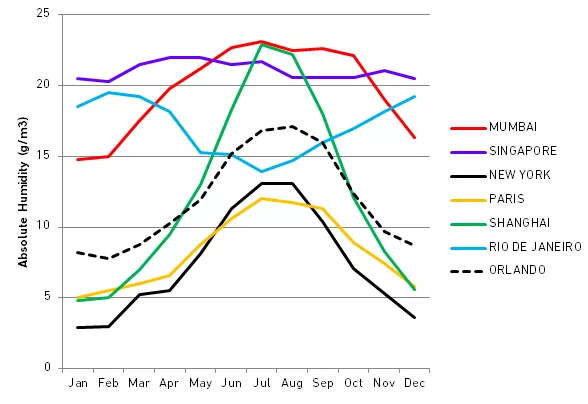
Influence of climate on sensory perception
To understand how the skin and cosmetics respond to tropical climates, we embarked on a groundbreaking endeavor. We set up a tropical room where temperatures soar to 80-90°F (from 26 ° C to 32° C) and absolute humidity hovers around 20 g/m³, mirroring the conditions of Singapore.
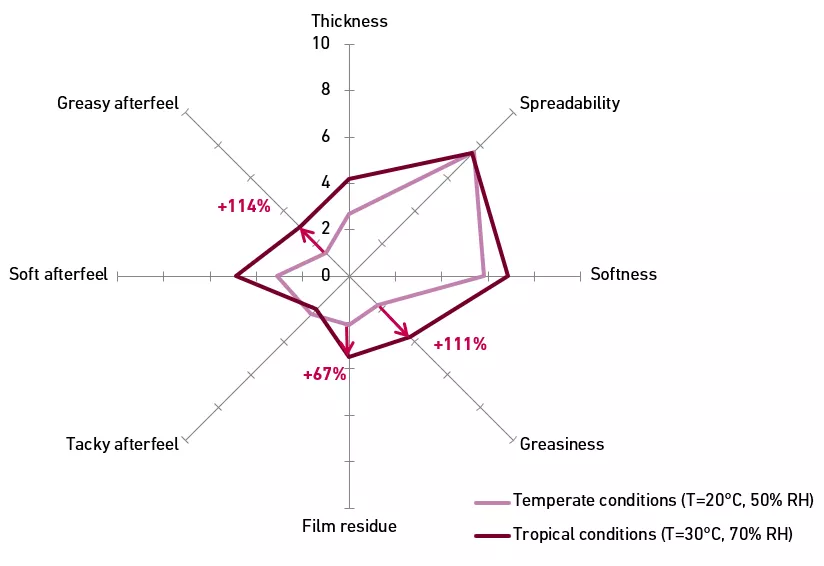
In this evaluation, a common moisturizer with 5% glycerin was analyzed.
The results were surprising!
Changing the weather made a big difference in how the product felt on the skin. It affected how oily it felt during and after use and how thick the leftover product was.
How to create climate adaptative formulas?
In our relentless pursuit of global skincare solutions, Gattefossé's experts developed an innovative technology that has a major impact climate adaptation: the wax butter technology. This technology yields 100% natural origin emulsifiers and texture ingredients with hygroscopic properties, delivering moisturizing benefits and distinctive sensory experiences.
Focus on a texturizing ingredient: Acticire® MB.
Our sensory analysis panel evaluated, in both temperate and hot & humid conditions, the sensory properties of formulations containing 5% of glycerin. The results were then compared to the sensory properties of an identical formulation with 5% of glycerin associated to 2% of Acticire® MB.
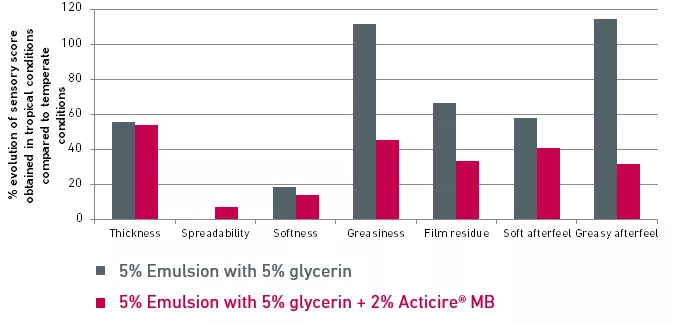
The percentage of evolution of sensoriality between temperate and tropical condition for the same cream and panel is analyzed.
The increase in perception of residual film, greasiness and greasy after-feel are strongly decreased with the incorporation of Acticire® MB. The skin feels less heavy and more comfortable: the invisible film formed by the wax esters is shown to stabilize the skin feel in hot and humid conditions.
What about emulsifiers based on wax butter technology?
Emulium® Mellifera MB, a PEG-free, O/W sensory emulsifier, showcased similar stabilizing effects in hot and humid conditions. Derived from beeswax and jojoba wax, it adapts to climate, creating active textures with low residual film and a light skin feel.
Further studies introduced creams formulated with Emulium® Mellifera in varying concentrations, affirming a consistent, non-oily skin feel irrespective of temperature and humidity. These creams prove versatile for year-round use, providing comfort and protection in winter and sensory stability in summer.
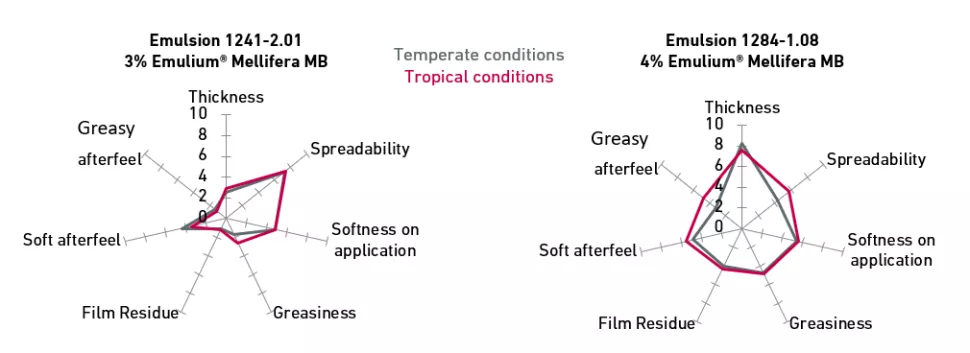
After decades of lipid chemistry R&D studies, recent advancements led to the launch of Emulium® Dermolea MB, an O/W emulsifier with a lipidic composition rich in sterols and triterpenes, offering long-term soothing effect. Also based on the wax butter technology, sensory analysis conducted in different climates confirmed its adaptability to diverse conditions.
Data shows that emulsions made with 4% of Emulium® Dermolea MB present a similar sensory whatever the climate, with a non-significant increase in greasiness, shine, tacky afterfeel, and greasy afterfeel.
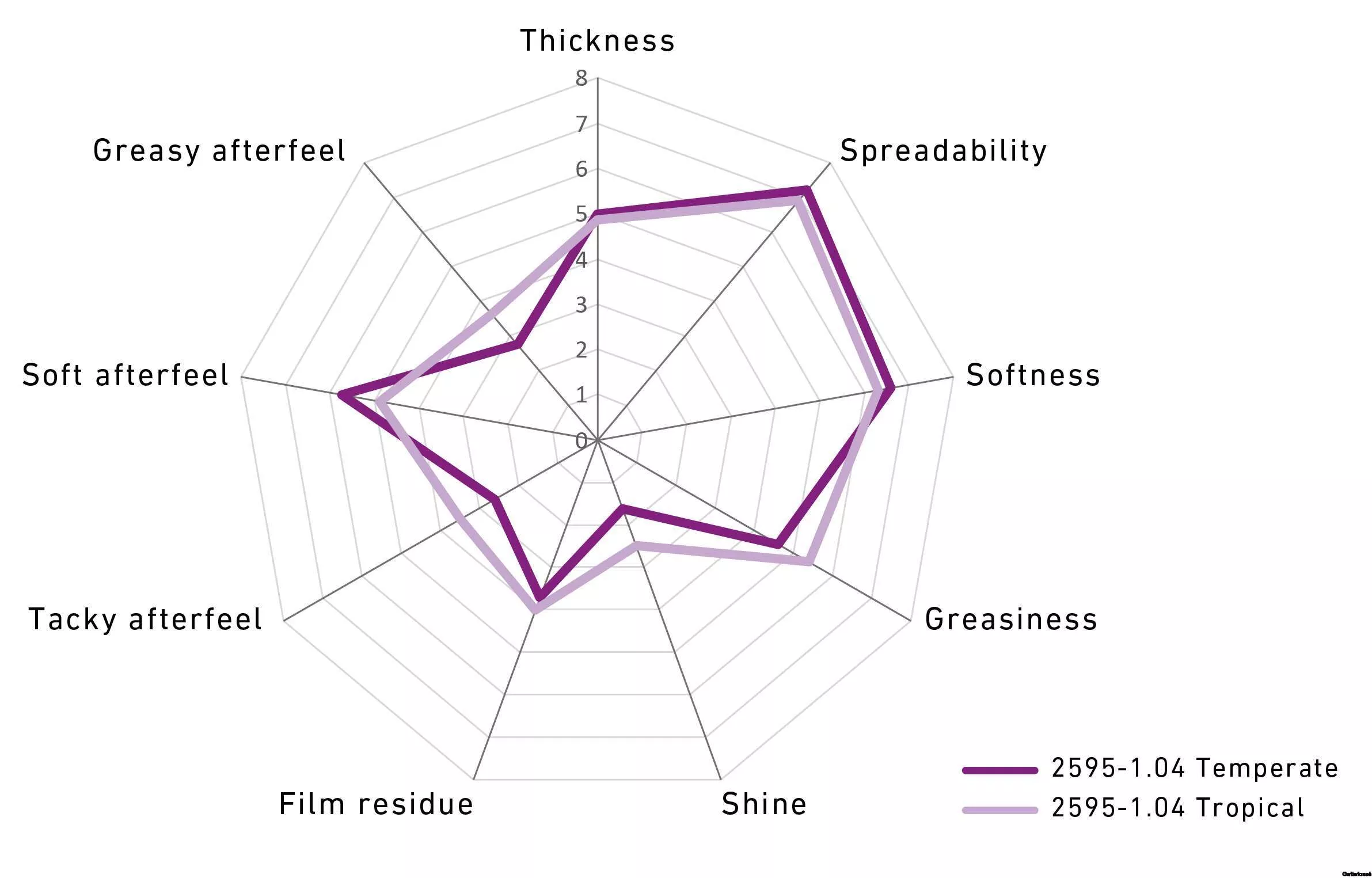
NB: It is still important to remember that the emulsifier is not the only factor influencing the capacity of a formula to adapt to different climates. Other components, such as a high percentage of glycols, can have a big negative impact on the perceived difference in sensory experience depending on the weather.
Our journey to understand how climate affects skincare continues. Stay tuned, and don't hesitate to get in touch for more details on climate adaptative ingredients!


